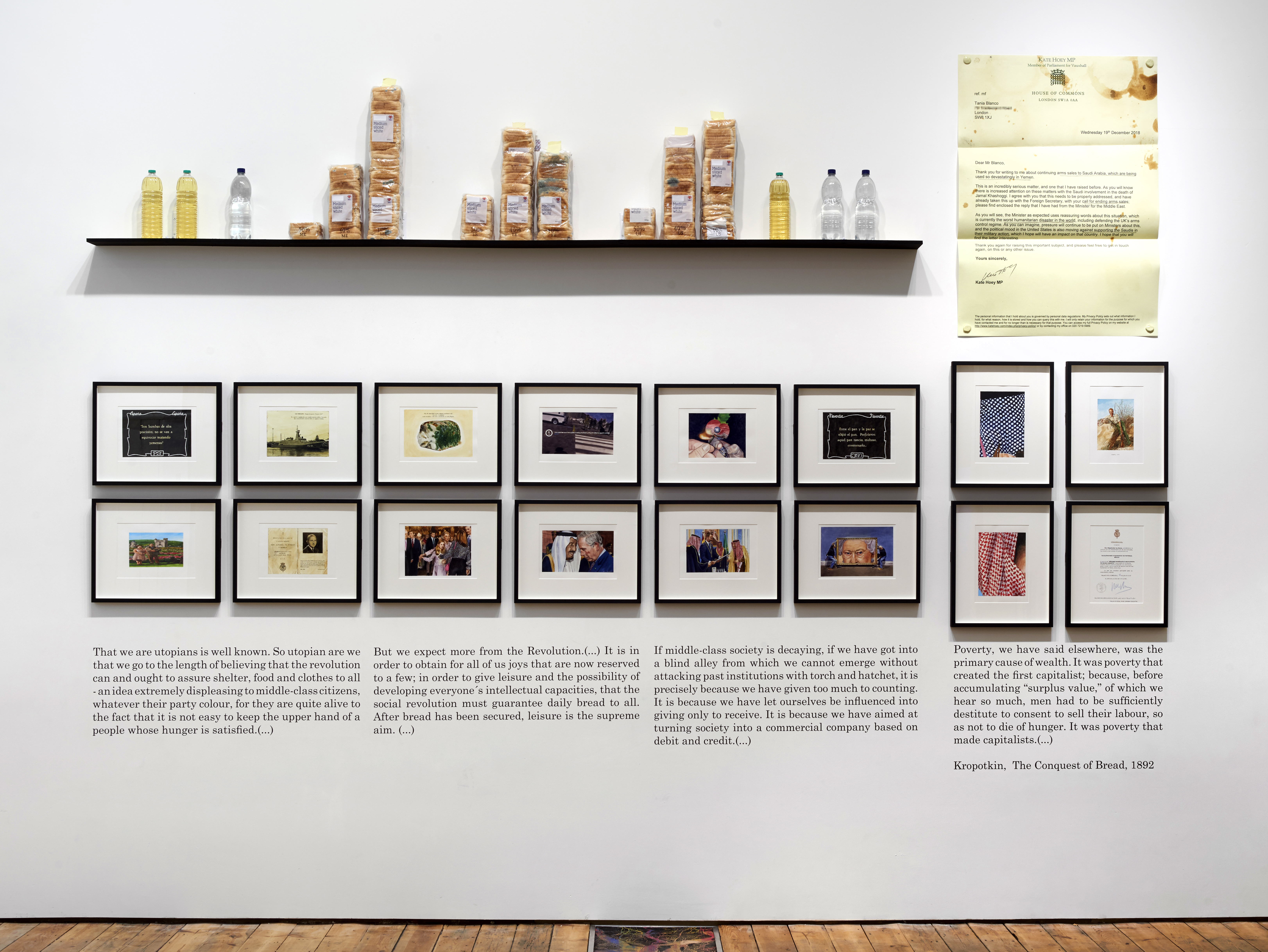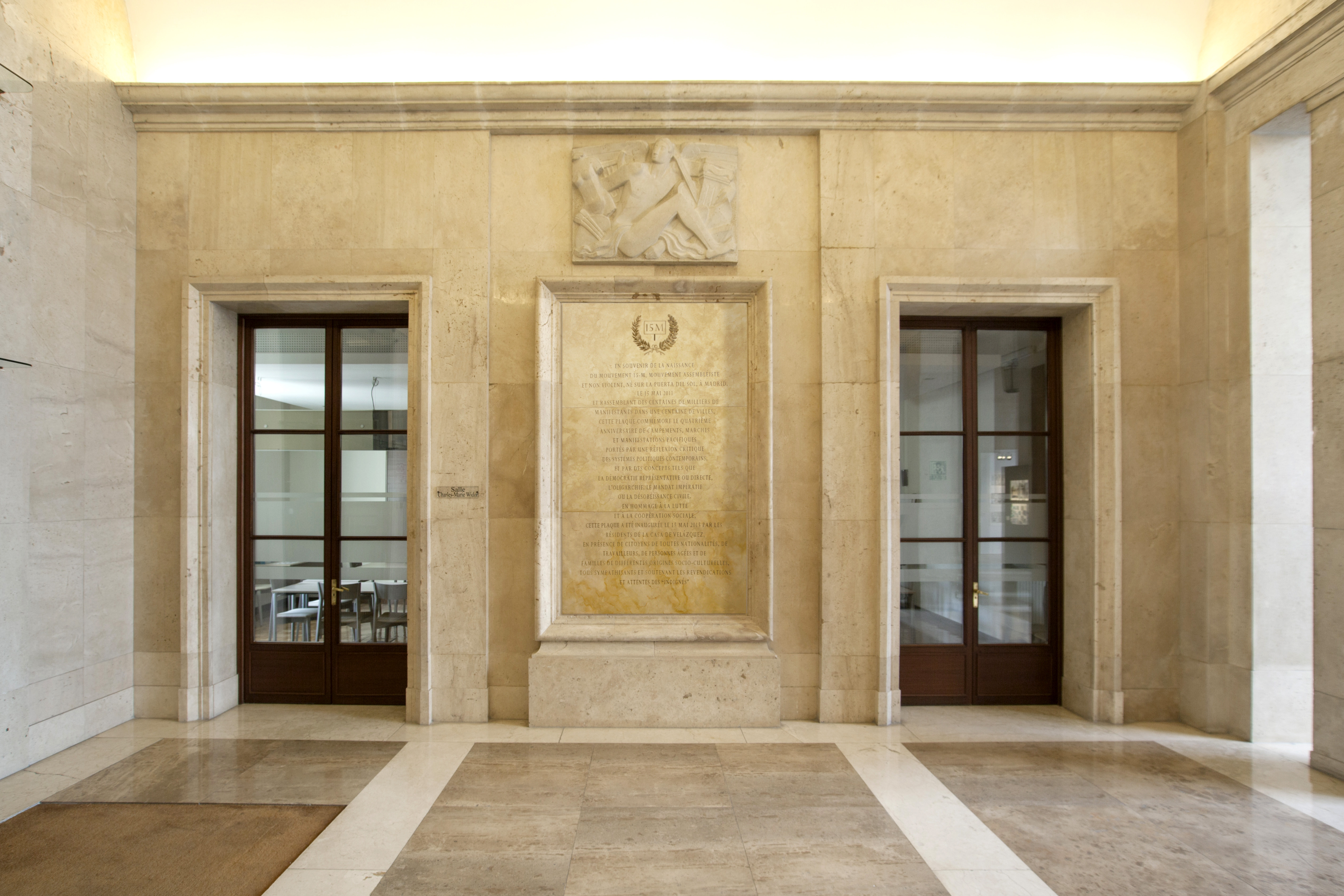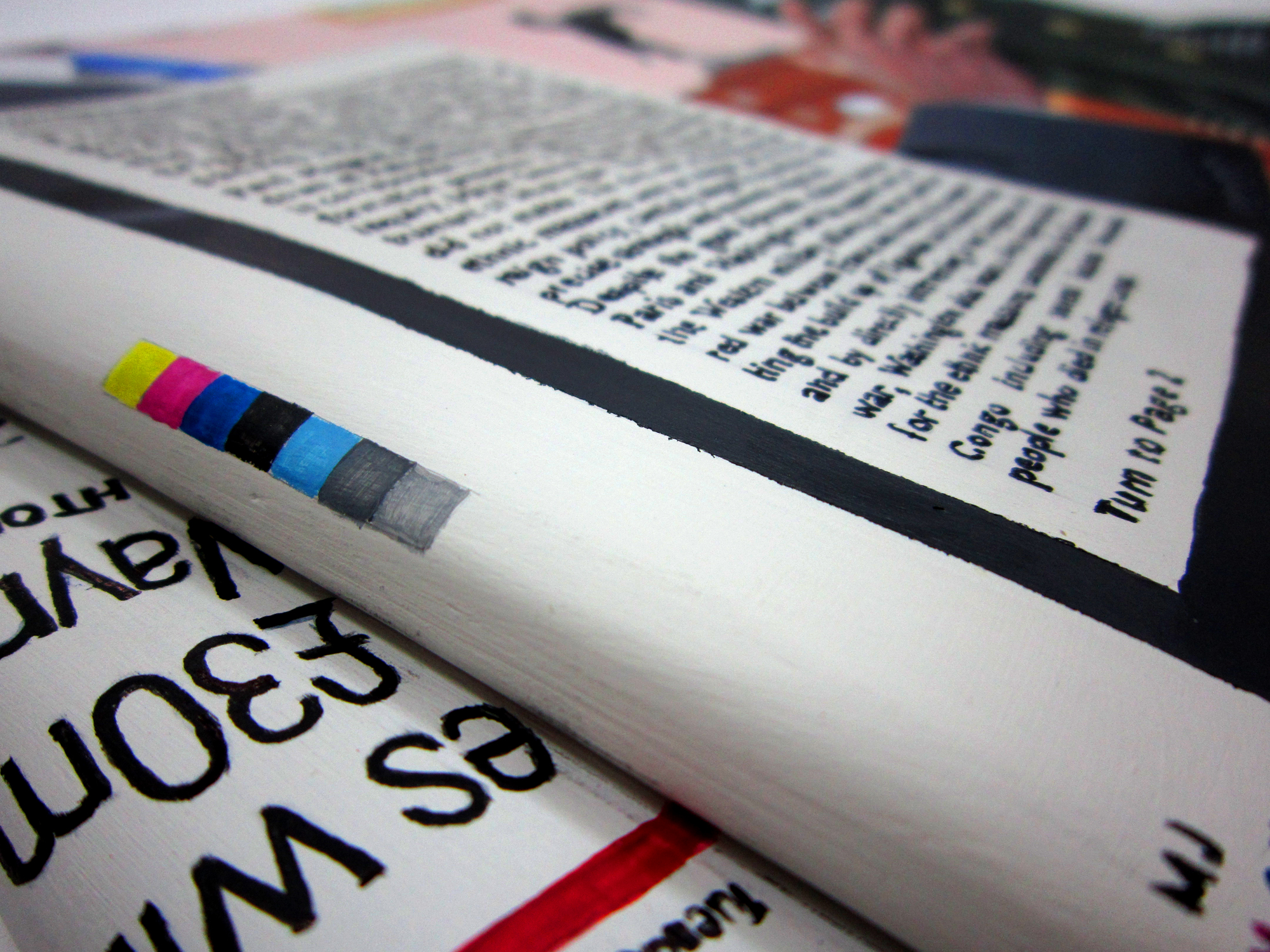Tania Blanco
Interview by David McLeavy
-
Published March 2019
-

News from the Palace Archive, installation, 260 x 400 cm
Framed original watercolours, 47,5 x 39 cm each
Reply or rhetoric, folded inkjet print on paper 110 x 77 cm
Emergency Shelf, bread towers, water, vegetable oil, 310 x 67 cm
Firstly I want to ask you about a recent project of yours titled News from the Palace in which you investigate the relationship between the UK and Saudi Arabia, specifically to do with the buying and selling of arms. I am particularly interested in the way you use the phrase ‘soft activism’ when you describe the work. Could you possibly talk a little more about where the idea for the work came from and tell me more about how activism is a useful part of your practice?
News from the Palace was born while researching on present growing global economic and social inequalities (as symptoms of neoliberal policies and capitalist structures) and my need of reflecting on contemporary issues that seem to be perpetual conditions that are impossible to change. In this process, settling for tools at my scale is essential. When I talk about "soft activism" I mean that my activism is a kind of small-scale one, and a soft one since I make use of irony which can be visually and formally pleasant, colorful, apparently kind... Appropriation, as a tool, also collaborates in that pursuit of "soft" confusion. So, going back to the idea of softness, and " soft power", I work in the direction of slowly, but steadily, building a growing narrative that whispers and suggests ideas in your ear, without loud noises or rigidity. While researching on the causes of inequality I identified the arms industry as one of the main and brutal problems of our time. Therefore, I decided to focus on the conflict in Yemen which is an ongoing crisis that I find extremely representative of the cynicism of today’s democracies, international policies, market operations and media coverage. That democratically elected governments from countries like Spain, United Kingdom, France, USA, etc. sell arms to the totalitarian absolute monarchy in Saudi Arabia (responsible for the bombing, blockade and humanitarian disaster in Yemen) is very revealing, but at the same time very lucrative for the elites.

15M, España (from À la victoire de...), photomontage Casa de Velázquez Hall, Académie de France à Madrid
How much influence or impact do you think contemporary art in general can have on such global issues?
I think it is difficult to measure the impact that contemporary art has when we speak about art in general... but if it was to be compared to the power of corporations, political parties, social media or the entertainment industry it might be very small.
Nevertheless the art world has many layers. If we put to one side, for example, the contemporary art that is used as a currency for speculation, as a commodity to provide social status or as a vehicle to do money laundering, we might come across a very rich layer of contemporary art that survives with small funding but with an unflagging emotional and intellectual hope and effort. This less visible contemporary art might apparently have little impact for many reasons (economic, social, educational, political, etc), but maybe this situation protects it and will strengthen its nature. Nevertheless, in the middle of the present hyper virtual connectivity ecosystem and the cacophony of social media images and advertising, there are always some cracks, some crevices... and art somehow makes its way... and crevices, once open, can become larger... In conclusion I would say that global issues can be affected and changed by the whole of the society, and every sector can contribute one way or another. It might be a naive thought, but I really believe that art has the potential to interfere, parasite, alter or channel ideas in different and unexpected directions...

Unexpected Documents in a Waiting Room, painted cooked clay publications, waiting room furniture, plant, clock, various sizes, Generaciones 2014, Casa Encendida, Madrid, 2014

Daily Mail detail (from Unexpected Documents in a Waiting Room), acrylic, ceramics, 28x21x3, 2013
It seems like most if not all of contemporary art can become commodified in some way and become subsumed within a market driven world, as inherently this is one of the main ways that artists can continue to survive and make work. I wondered how much your distain for certain systems affects the way you approach making work and producing exhibitions? I suppose what I am asking is what is your relationship with making work that gets presented within capital fuelled environments such as commercial galleries and art fairs and is this different to the way you approach showing your work in other circumstances?
This is a very interesting question. My personal experience and/or my past activity as Chair of a Visual Artists Union (avvac) have slowly broadened my view of the market throughout the years… In my case there have been periods that I have refused to participate in art fairs, and others that I have been happy or in need to show and sell. There is no guiltiness or contradiction for having succumbed to the market, and for many reasons: self-survival, investment recovery, honest collectors/buyers, fair exchange, etc. Nevertheless, I think it is a risky option for an artist to rely mostly on sales in the art market. There are other ways of producing work and making a living that involve no trading such as fees (for producing commissioned art projects in public institutions, for art residencies, for running workshops/seminars, etc). The range of options is not enormously wide, but as I said, there is a margin to decide how you want your voice to be listened and remunerated. Going back to relying on sales… I think it is risky in the long-term because the market imposes its ephemeral and capricious rules and these are easily a menace to knowledge, to the right scale, to rich and honest creation.
In response to your first question on how certain systems affects the way I approach making work and producing exhibitions... Well, I often conceive and create my works to be perceived in a certain ground, and this ground determines the format and/or the nature of the project. So, a sort of “relational aesthetic“ spirit, sometimes, when possible, overlays and conditions the concretisation of the works. I am very interested in the “chemical” reaction that results from challenging the space and its intrinsic nature and resonance. Therefore, I don’t have a fixed preference for showing my work in the market environment to other circumstances. I will probably try to seize the moment to softly open one of those cracks that I mentioned to you before… To work in the “enemy´s” territory keeps me working because from that precise spot you sense you can achieve changes, but at the same time the risk is inevitable along with the fear of isolation or silent censorship.

Unlid 4 Activia, acrylic, resin, gypsum, 12,5 x 7 x 12,5 cm, 2016
I am interested to know how you feel your work may have changed over the last few years, especially now you are currently participating in postgraduate study at The Royal Academy, London. Could you maybe talk about some of the works that you have produced that you feel are of particular importance over the last few years and how your work may, or may not, have changed as a result of this?
I guess my work has been changing a bit...maybe following a natural mutation. Nevertheless, similar interests and worries have been recurrent over the last decade. Regarding the making, it has taken different forms, but it has been somehow loyal to certain conceptual and aesthetical conceptions. I have been playing and trying formulas with diverse “algorithms”. Before landing at the Royal Academy I finished a two-year project titled UNLID that focused on the backstage and contradictions of the food industry today. This project was developed thanks to several art production grants. For example, the well-equipped workshops and context of Bilbaoarte (a public art institution in Bilbao, Spain) allowed me to think and build most of the objects and display elements of UNLID. I had been reading on food sovereignty, food policies and food industry for a long time as well as changing my own consumer and eating habits, so It was a good moment for shaping and materialising all these concerns.
After this two-year period, last year I enrolled in the Postgraduate Program of the Royal Academy of Arts. Moving to London and integrating the RA in my life and work dynamic has had an important impact. I am still in the process of defining many of the elements that will articulate the project I will develop this year and the next. It all started with some fake letters that the lady´s-in-waiting of Elizabeth II sent as replies to her admirers… These letters worked as the excuse to reveal economic facts about the British Crown. From here I extended my research to the Spanish Royal Family. I concluded that putting to one side some nuances they work mostly like corporations with outstanding tax exemptions, commissions for mediations, fiscal privileges, power to interfere in national policies, etc. all in the disguise of dignified traditional neo-feudal altruistic institutions. The nature and aesthetic of this kind of obsolete hierarchical structure of power amid the era of vindication of democracy and democratic rights has captured my attention for many reasons. It is all slowly germinating and building up an archive-collection of watercolors. Nevertheless, this does not exclude that I will explore other materials and formats.

UNLID, installation view, ceramics, resin, gypsum, acrylic, plywood, Bilbaoarte Fundazioa, 2017
Have you seen any difference in the way that your work is being received here in the UK compared with Spain or other countries you have presented work?
It is difficult to say… in the UK so far, my work has only been exhibited at the Royal Academy of Arts in London. The 2019 Premiums group show at the RA in which I currently participate has become a test ground where I can only speculate about the impact my work may have. Some group shows can be tricky as they may only show a fragmented view of different narratives, and at the end you are left a bit frazzled.
My work has been extensively exhibited in Spain, and in general I feel it is perceived in a different manner abroad. Probably the main reason why it might be received differently might be related to the historical and sociopolitical contemporary contexts as well as my formal and conceptual references. After the social upheavals of the 15th of May 2011, Spain experienced many changes, not only in the creation of new political alternatives, but also in the strong politicization of the population strata which before them, remained silent and/or disengaged from politics. As part of that society it slowly became clearer to me that I needed to address the issues that were conditioning my life and context, so in many works, I have addressed or mentioned very specific issues of the Spanish context, often using text which lead to less ‘artistic' ambiguity.
The expression of ‘indignation’ in my work evolved alongside the Spanish crisis and the population’s awareness of the menace that unequal distribution of wealth or reserved privileges to protected minorities meant to any society. Therefore, these could be some of the reasons why my language may resonate more with the Spanish public.

Emergency Shelf, bread towers, water, vegetable oil, 310 x 67 cm, 2019 (Photo by Andy Keate)
You mentioned that you are currently presenting work as part of Premiums at the Royal Academy of Arts in London. Could you talk to me a little more about the work that you are presenting there?
The work consisted on a display of a part of the original works from News from the Palace Archive and material on which I have been working since 2018. The collection of works draws a quite restrained composition of elements in balance: a non-symmetrical grid of 16 framed watercolors, an enlarged reply letter from the House of Commons, a shelf with three bread tower charts, vegetable oil and water and vinyl texts with four anarchist quotes from Kropotkin´s Conquest of Bread. All these elements compose a selection of connected stories and narratives that address the recent and future sales of arms to Saudi Arabia, as well as the link, common interests and support of some European Royal Families to the Absolutist Monarchy of that country. The watercolors represent a collection of appropriated images from diverse mass media platforms. In some cases, the original images have been distorted or have incorporated text. The installation of the wall is visually quite heavy, playing a bit of horror vacui, interpreting and recalling a museum-like installation in the context of the Royal Academy. The idea was to put together all the different elements that in a solo show would have been carefully scattered in the space. Nevertheless, in this case, they have all been rationally organized, stacked against a wall, forced to climb and occupy/parasite a limited vertical surface.
-
taniablanco.com/
-
If you like this why not read our interview with Calum Crawford
-
© 2013 - 2018 YAC | Young Artists in Conversation ALL RIGHTS RESERVED
